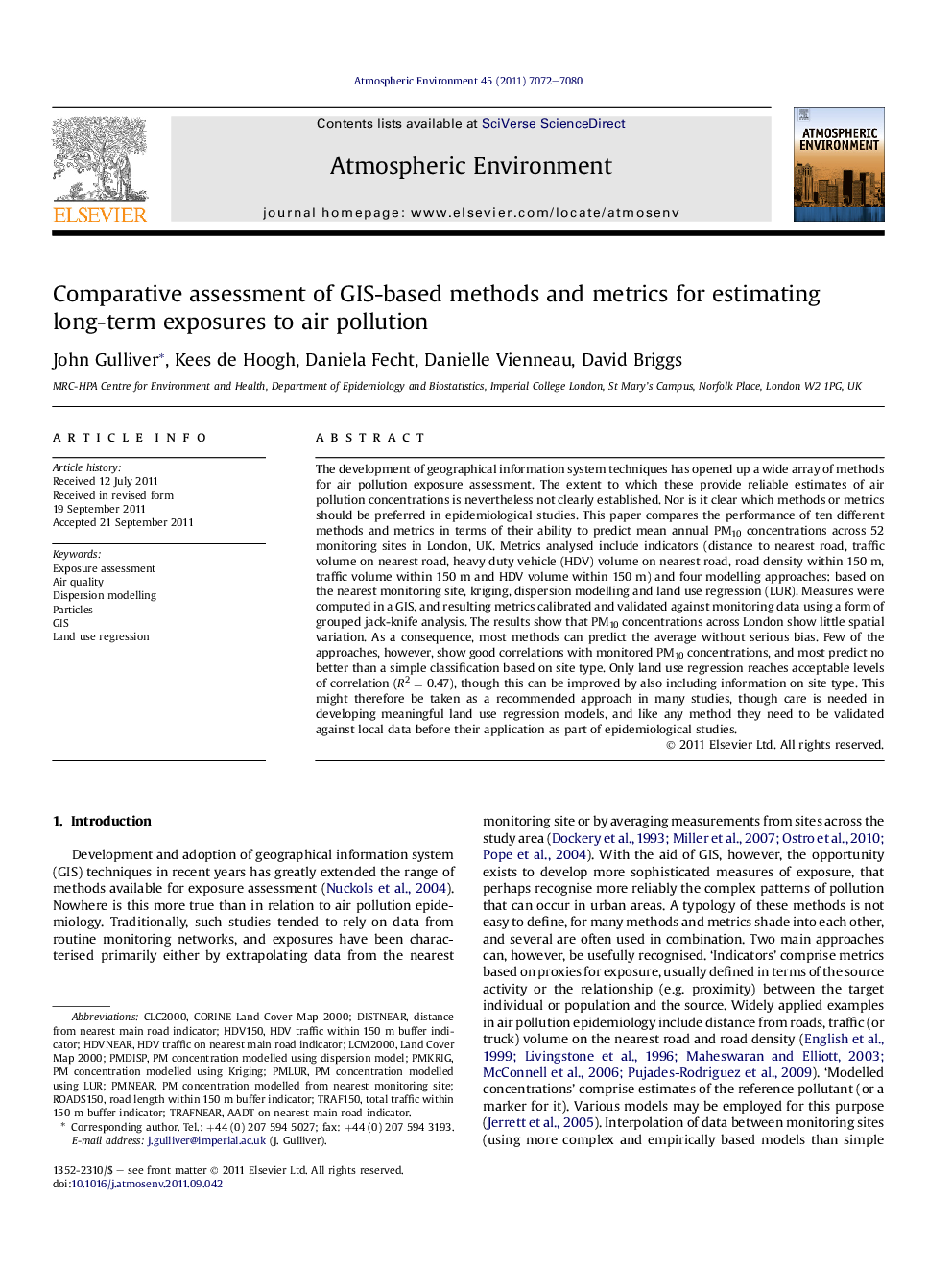| کد مقاله | کد نشریه | سال انتشار | مقاله انگلیسی | نسخه تمام متن |
|---|---|---|---|---|
| 4439144 | 1311011 | 2011 | 9 صفحه PDF | دانلود رایگان |

The development of geographical information system techniques has opened up a wide array of methods for air pollution exposure assessment. The extent to which these provide reliable estimates of air pollution concentrations is nevertheless not clearly established. Nor is it clear which methods or metrics should be preferred in epidemiological studies. This paper compares the performance of ten different methods and metrics in terms of their ability to predict mean annual PM10 concentrations across 52 monitoring sites in London, UK. Metrics analysed include indicators (distance to nearest road, traffic volume on nearest road, heavy duty vehicle (HDV) volume on nearest road, road density within 150 m, traffic volume within 150 m and HDV volume within 150 m) and four modelling approaches: based on the nearest monitoring site, kriging, dispersion modelling and land use regression (LUR). Measures were computed in a GIS, and resulting metrics calibrated and validated against monitoring data using a form of grouped jack-knife analysis. The results show that PM10 concentrations across London show little spatial variation. As a consequence, most methods can predict the average without serious bias. Few of the approaches, however, show good correlations with monitored PM10 concentrations, and most predict no better than a simple classification based on site type. Only land use regression reaches acceptable levels of correlation (R2 = 0.47), though this can be improved by also including information on site type. This might therefore be taken as a recommended approach in many studies, though care is needed in developing meaningful land use regression models, and like any method they need to be validated against local data before their application as part of epidemiological studies.
► Performance of ten air pollution metrics/methods for exposure assessment was compared.
► Simple extrapolation of monitoring data from the nearest site was the least reliable approach.
► Most simple indicators based on road density or traffic volumes performed poorly.
► Land use regression models performed significantly better than all other methods.
► Information on site type improves performance of dispersion and land use regression models.
Journal: Atmospheric Environment - Volume 45, Issue 39, December 2011, Pages 7072–7080